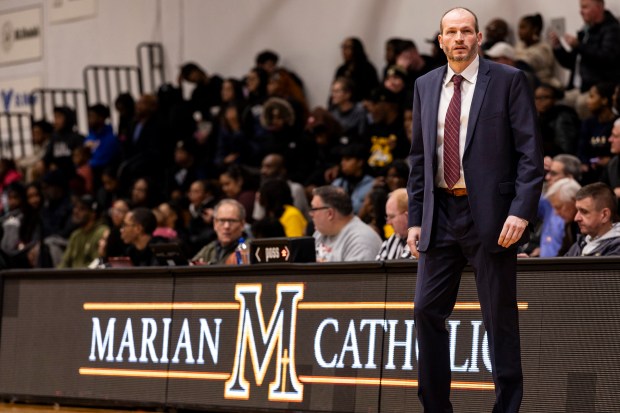Hours before announcing his bid for U.S. Rep. Jan Schakowsky’s seat in next year’s election, Evanston Mayor Daniel Biss touted Evanston’s accomplishments and aspirations, from a proposal for greater density to more informed police responses, at a standing-room-only State of the City address on Wednesday. It was his first such address after winning about 63% of the vote in last month’s mayoral election.
The address, held at Evanston Space, brought in over 100 people to the city-sponsored event. Biss said it has been two years since the city has seen a murder, a feat not accomplished since the 1970s, and pushed for more affordable housing in Evanston, while taking shots against President Donald Trump.
In his next four years as mayor–which could be curtailed if he wins the Congressional election — Biss will continue his efforts to lead and pass Envision Evanston 2045, an effort which updates the city’s zoning code and serves as its comprehensive plan for the next 20 years. It has received a mix of support and criticism from Evanston residents when it comes to constructing bigger buildings and increasing density throughout Evanston. Biss will also need to balance the next year’s budget without American Rescue Plan Act funding from the federal government after the Covid-era dollars ran out.
Some city leaders noted, after Biss announced his run for Congress, that campaigning will take a significant amount of the mayor’s time and energy, and they wondered aloud where that would leave Evanston.
Biss touted the achievements of the Crisis Alternative Response Evanston (C.A.R.E) team, whose members have the training to respond to mental health and non-violent 911 calls. The team went through training at Oakton College last summer and has since responded to over 1,500 calls, Biss said.
“It’s been a game changer in this community,” Biss said, adding it has opened lines of communication in Evanston for trust to be established.
In April, the Evanston Police Department was selected the 2025 Illinois Crisis Intervention Team Department of the Year by the Illinois Law Enforcement Training & Standards Board. Prior to that, Evanston Police Chief Schenita Stewart was awarded Police Chief of the Year by the Illinois Association of Chiefs of Police.
“More important than any prize or any word or any speech is that violent crime has plummeted in the city of Evanston,” Biss said. “These changes are making a difference.”
Biss then spoke about Trump, whose administration attempted to cut federal funds to Evanston and other municipalities, he said, but was blocked by a federal judge from doing so.
“The administration in Washington is terrifying people across Evanston… It’s making the management of city government much harder — as we don’t know what we’re going to find out tomorrow about missing revenues.”
“In Evanston, we believe in fighting back. We believe in fighting back in any way we can. Before Donald Trump even took office on January 20, we had passed the strongest Welcoming City Ordinance in the state, possibly even in the country, to ensure that we are not doing anything to collaborate with or assist civil immigration enforcement that is counter to our community’s values.”
Biss said the city must ready itself for potential threats to federal grants, but also remain on course to implement innovative programs such as the C.A.R.E. team.
“This brings me to one of the main live topics that exists in our city government right now, which is Envision Evanston 2045: A hard issue, a complicated issue, an issue that has all kinds of nuance and all kinds of tactical components and all kinds of subtlety and all kinds of intense emotional balance,” Biss said.
Biss repeated pillars of the comprehensive plan: to allow for more housing in Evanston, to create more housing in Evanston and to implement sustainable practices in Evanston in alignment with the city’s Healthy Business Ordinance.
“There is a lot of good that will come in this, but it’s hard work, and it’s complicated and it’s contentious, and there have been tough conversations.”
“My message to the community is very simple,” Biss said. “We have to stay in these conversations. We have to welcome every voice to the table. We have to make sure that every point of view is represented and heard… We cannot accept the idea that it’s too hard, it’s too controversial… We’re just going to ultimately back down.”
“We have to remember who we are. As Evanston, we see society’s toughest challenges, we study society’s toughest challenges and then we do what we can to address society’s toughest challenges.”
He cited an example from Evanston’s history when Connections for the Homeless was formed in 1984. With a lack of support from municipal leaders to house the homeless, Biss said faith leaders took it upon themselves to use their houses of worship as shelters.
“The city said, ‘Great idea. Too bad about the zoning,’” Biss said. “A familiar sentence, that turns out.”
Faith leaders found a loophole then, Biss said. “The zoning did not permit a shelter. The zoning also did not prohibit an all-night prayer vigil. And how about one tomorrow night? How about the night after that? And how about the night after?”





